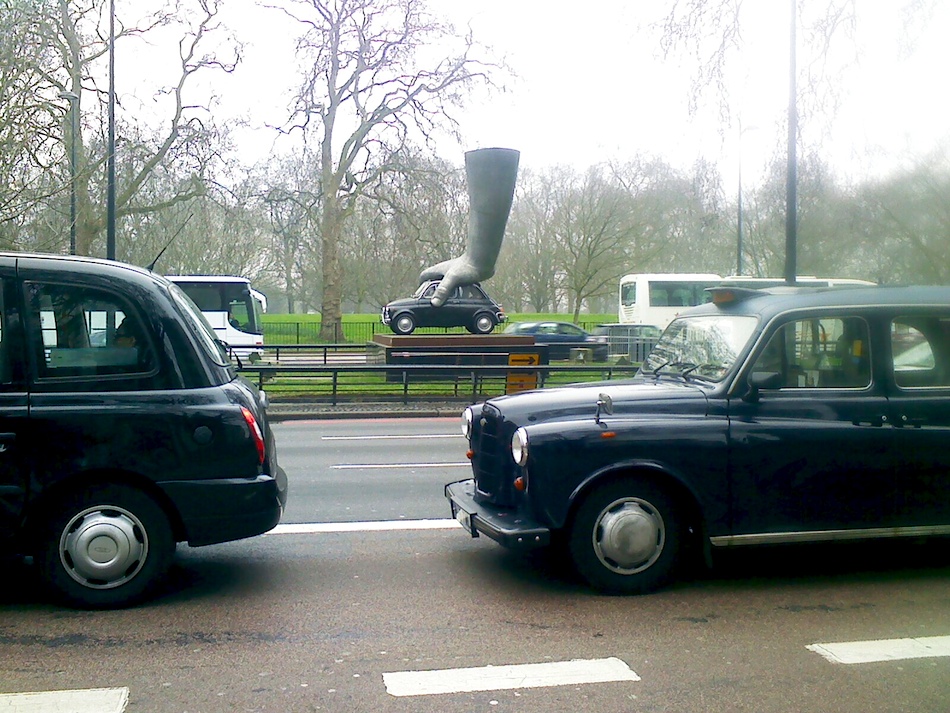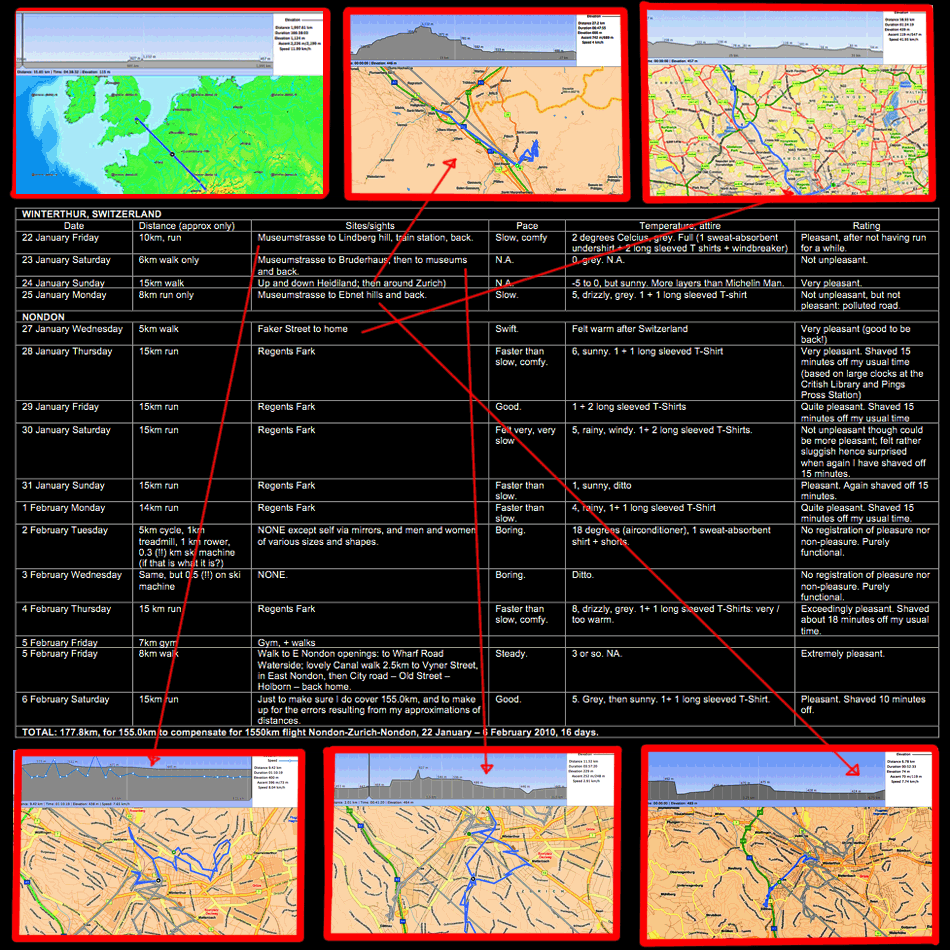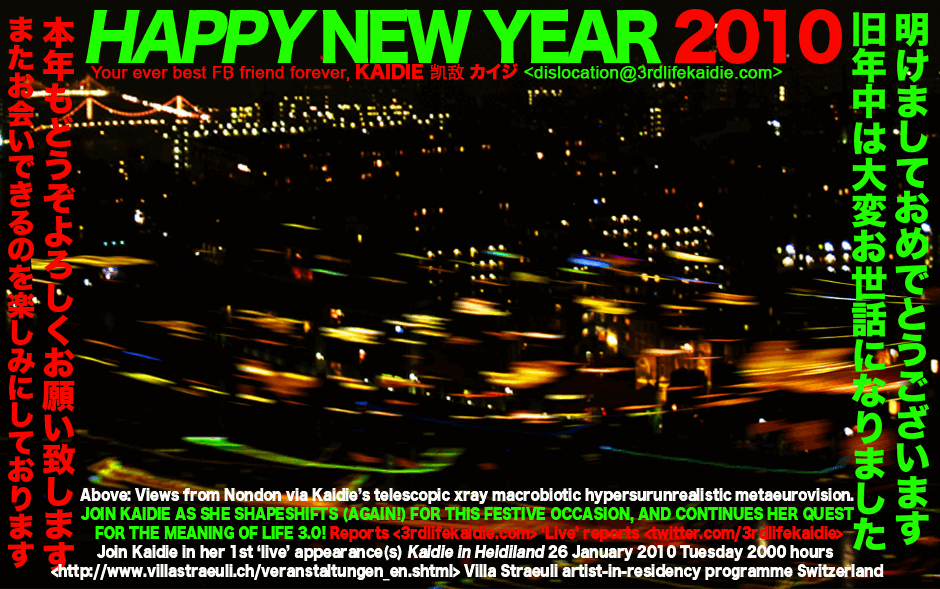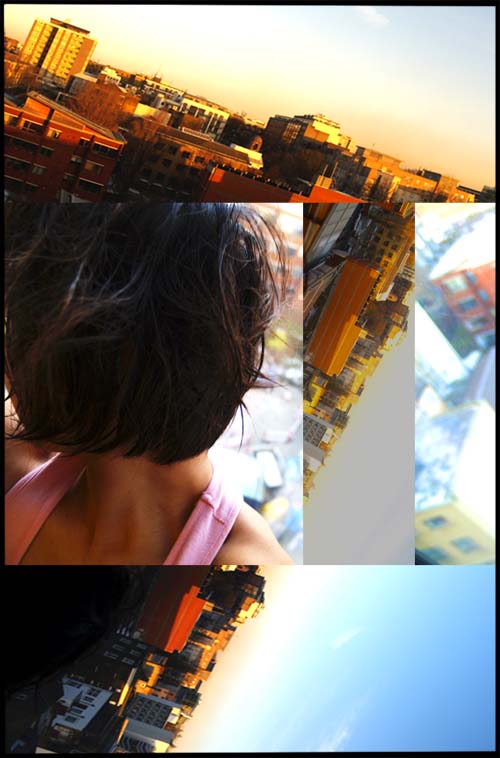CRUSHING DEATHS, CRUSHING LIVES: We seek not immortality (as if one lifetime is not more than enough!!) or happy afterlives (we yield not to bullying and blackmails by institutions); we fear not death, but life itself, and how we are living/running it.
As we run inter-dimensionally across Life 1.0 and Life 2.0, we run in the chaosmos of mortality and immortality. Traversing backwards and forwards between living-subject-to-death and never-dying, the inter-dimensional runner is able to get best of both worlds. In such a setup, life and death become a multidirectional circle. Living or running in such a circle, any existential angst can be extinguished: we live (each) life to the fullest and cease fearing death. Instead of mourning for the dead, we sing, as Zhuang Zi (Chuang-Tzu) did after the death of his wife. ‘If I were to follow after her bawling and sobbing, it would show that I don’t understand anything about fate.’[1] Zhuang Zi looked at his wife’s death as another stage of life, as a continuation from ‘the time before she was born’ (which itself was a stage after ‘the time before she had a body’, which was in turn after ‘the time before she had a spirit’.) For him, ‘just like the progression of the four seasons, spring, summer, fall, winter,’ death is merely ‘another change’. As Sinologist Norman Girardot explains, the initiatory symbolism of returning to the condition of either infancy or death echoes the cosmic return to the chaos condition.[2] In this mixed, third condition, infancy and death are ‘symbolically equivalent’. This is the Dao’s (Tao’s) creatio continua. When a man dies, ‘he goes to his rest, rises again to his zenith’. This ‘return to the beginning’ after our death is ‘the ultimate harmony’, and is the chaosmos of mortality and immortality that the inter-dimensional runner is able to enjoy.
Daoist (Taoist) expert Kristofer Schipper observes that these notions (life and death as circular, and death as transformation and renewal) are clearly embodied in Lao Zi (Lao-Tzu) himself, as well as the mythological circumstances of his birth. Across literature such as the appropriately-named Book of Laozi’s Transformation and Book of Endless Mutations of Laochun (another name for Lao Zi) and so on, the Old Master says: ‘I transform my body, passing through death to live again… I die and am reborn, and each time, I have a [new] body.’[3] True to form, Lao Zi is said to have gone through nine transformations before he was born, and was hence born already an old man. Yet another example of these ‘continuous mutations, this joyful changing according to time’s cycle and the nature of things’, is the story of how the ‘Old Child’ was an orphan free of baggage, knowing ‘neither parents nor children, neither lineage, nor country’, and ‘no tomb nor holy relics’.[4] In yet another version of the story of his birth, the ‘Old Lord’ was said to be ‘his own mother’. The theme of the juxtaposition of life and death is most poetically encapsulated in the version that says that Lao Zi’s mother died ‘[at] the sight of her offspring.’[5] In the ‘brief moment between birth and apotheosis’, it is said that the Mother ‘reveals to her child the secrets of the art of immortality, of that ‘Long Life’ which the Old Child has just experienced in his mother’s womb’. Where there was ‘neither birth nor death’, a complete cycle of the cosmos was accomplished.’ To the Daoist, death and life are but ‘2 phases of a cycle’, with an ‘alternation analogous to that of yin and yang’.[6] All the stories of Lao Zi’s birth point to the same thing: that the ‘organic round of life and death’ is but a ‘rite of passage’ that ‘constantly involves moments of growth and regression, security and danger.’[7]
Yet, even though death is not considered as an ‘ill’ in Daoism, but as ‘only one phase of the total process of human life in time’,[8] prominence is still placed on achieving a good quality of life before death. This is where the notion of yangsheng – the preservation of life and nourishment – returns. In fact, the emphasis is not only on a good journey before life, but a good long distance journey before death, with longevity and, as an extension of that, immortality as the aims of yangsheng. Indeed, Schipper goes so far as to say that it is legitimate to ‘link the classic works (the book of Zhuang Zi and the Dao De Jing [Tao Te Ching]) as do the Daoists themselves, to the search for immortality […].’[9] While there are mystical elements (as we have seen in the case of Lao Zi for instance, who was said to have lived for thousands of years), the Daoist concept of immortality is primarily focused on everyday reality, through real-life practices including medicinal science and physical exercise, as we have already established at the beginning of this Chapter. Hence, when we run inter-dimensionally, in the chaosmos of Lives, not only do we run to-and-fro the circle of life and death, we also ensure that, before dying, we run a good, long distance life.
[1] Zhuang Zi, ‘The Complete Works Of Chuang Tzu’, Terebess Asia Online (TAO), trans. by Burton Watson <http://www.terebess.hu/english/chuangtzu2.html> [accessed 13 January 2011].
[2] Girardot, N. J., Myth and Meaning in Early Daoism: The Theme of Chaos, Three Pines (Three Pines Press, 2009), p. 126.
[3] Schipper, Kristofer, The Taoist Body (University of California Press, 1994), p. 116.
[4] Schipper, p. 166.
[5] Schipper, p. 122.
[6] Schipper, p. 37.
[7] Girardot, p. 5.
[8] British biochemist and Sinologist Joseph Needham 1974, 77?84, quoted in Girardot, p. 5.
[9] Schipper, p. 15.
Cycles of British Summer Times, cycles of growths of hair (and nostril hairs, and armpit hairs, and mould, and toenails, and teeth, and earlobes, and laugh lines, and tear lines, ley lines, hemlines): WHAT HAPPENS TO PEOPLE WHO HAVE NOT HAD A HAIRCUT FOR AN ENTIRE LIFETIME?
What happens to people who have not had a haircut for 470 days? They end up bushy and flustered, wishing an earlier death than the last day of the Nondon Olympics (09.09.2012) so that they can enjoy the catharsis of a purge of (the) burden (of excessive foliage). (To be sure, many things cease growing when one is dead, hair included.) (And, to be sure, we have had to trim our fringe/bangs every now and then (every 3 weeks, really) in the past 470 days- freeing our eyes from follicle curtains.)
After Tehching Hsieh.
PS: Happy British Summer Time. Goodbye wintry cloudiness. Hello sunny lucidity. Runnnnnnnnnnnnnnnnnnnnn.
PPS: WE ARE STILL TRYING TO RAISE MONEY FOR OUR RUN FOR SHELTER FOR THE 2011 NONDON MARATHON! DO LEND US A HAND! OR TOE! OR DOLE! OR DOUGH! IT’S THE FINAL LAP OF COLLECTION: WE ARE TRYING TO COLLECT THE FINAL £342! SO PLEASE HELP. Training-wise, we have been doing 35km (by looping around the Regents Fark, our favourite Fark in Nondon, swimming amongst the cherry blossom petals very poetically, smelling the roses, talking to the giraffes, kicking babies in their strollers and their parents blocking the pavements on their way to the overcharged zoo, performing our kungfu levitational-sidestepping of fecal deposits by horses, dogs and again the irresponsible and silly young parents, smiling back at fit cops and fellow runners (them probably trying to hold back their guffaws at the sight of our inelegant gait of wildly flapping arms and thundery steps – FEE! FI! FO! FUM!), making a gurning & constipated face at anyone else unfit, cursing & projectile-spitting at builders, fat middle-aged uglies and other uglies who make crass (insect-like? rat-like? try harder!) sounds or say crass things (‘Saucy’! ‘Slow down love!’) when we run by, looking ahead at the 2cm ahead of us, one step, at a time, for we are short and short-sighted), and are tapering down (AND CARBO-LOADING UP!!!!!!!!! YAYYYY!!! More chocolates please! And cheesecakes! And Moet! And Chandon! And roasted pecan nuts! And frothy cappuccino! And salmon!) for the next 28 days, before race-day on 17 April 2011 Sunday. We are terribly excited about the big day and hope to see you along the 42km scenic route – ON THE CONDITION THAT YOUR PRESENCE ADDS TO THE SCENERY! So, please do not come if you are ugly, or consider yourself aesthetically-challenged. Unless we run with hair as shown in the picture above, in which case you can look as you please and we will not be distracted. Which is why we do our hair like this, because we do not claim to be un-aesthetically-unchallenged. Forget it, please come, every body. Come together. Right Now. Over us. With us. Along us. Without our spectacles and with us Bolting so quickly in our splendid Shelter vest everyone will register as a blur. Wooosh. We are lying of course. We run about 2cm every 20 seconds. We do our best. Our mind is willing – more than willing. But, alas, our legs can only do that much. We are only that long. Or short. We have more excuses, of course – for instance a persistent painful protrusion on our left feet, tendonities on both legs when we are not careful, and so on. Nothing new. So. See you soon(er). Or later. See you around. And round. And in our next lives (will we recognise you better then? And vice versa??)
WHAT DOES TIME MEAN FOR SOMEONE WHO EXISTS ONLY FOR 1000 DAYS? Urbantick interviews Kaidie.
 Urbantick: How does time pass in relation to your life of 1000 days?
Urbantick: How does time pass in relation to your life of 1000 days?
3rdlifekaidie: Kaidie is alive from 12.12.2009 to the last day of the London Olympics, 09.09.2012. (Do note that the dates form a pseudo-pallindrome of sorts!) As we speak, Kaidie is already 150 days-old, and has only 850 days or 216,000 minutes left. Having a clear knowledge of one’s duration Kaidie’s existence all the more intense and augmented. It is in living a death sentence that one is compelled to question what one’s priorities in life is. It is an extremely positive and focused experience, as Kaidie lives every minute to the fullest. Being a runner only accentuates this. Running echoes the speed at which technology is changing today. This technological rush and running both make Kaidie run out of breath. That said, she is not a sprinter. Hardly…
Urbantick: Your life is constrained to 1000 days. How does 1000 days feel? The limitation probably is even more obvious compared to something that lasts longer. What do you measure the passage of your life against? You are talking about living life to the limit, experienceing it intense and running. Is there a slow and a fast time?
3rdlifekaidie: 1000 days is both tortuosly long and terribly short. What could be accomplished in 1000 days? For Kaidie, she has to find the Meaning of Life 3.0 (with)in/before time runs out. Is 1000 days long enough for that? Or is it too thinned out? Traveling around the world in 80 days seem like a ride of a lifetime; 800 or 8000 days is still not feel sufficient for one to heal the wound of a dead memory; 1 day is 1 too many to go cold turkey on an addiction/obsession/obscure object of desire; every minute of every single day is a new discovery, a new beginning for a baby. Running 42km for 5 hours seems a little preposterous; ‘hanging out’ with a loved one for the same duration seems too short, as one always yearns (futilely) to ‘spend the rest of one’s life’ with an other. Kaidie rejects any notion of eternity and permanence (if there is one thing that is remotely ‘forever’, it is the notion of changeableness). Instead, Kaidie plunges into the moment of the now/here, and lives like all tommorow’s parties (and funerals) are right now.
As Kaidie traverses between the real and virtual worlds, she measures her time against the calender in real life. Taking the cue from one of her favourite performance artists Teh-Ching Hsieh and his 1-year performances, Kaidie cannot cut her hair for 1000 days. Well, most of her hair. It would be rather unbecoming to appear excessively Neanderthal, would it not.
Urbantick: Is it important to be on time? Looking back, how have you come to this position and what is your background? What is you strongest time experience?
3rdlifekaidie: Of course it is important to be on time – especially given that Kaidie has such a short lifespan of all of 1000 days only. Not to add that it is incredibly rude to keep someone else waiting – unless one intends to offend the other party, in which case it works rather well. One of Kaidie’s stronger time experiences so far was when she took part in the 10km charity run for the Friends of Medecins Sans Frontieres. She split up the workload with her Facebook friend, Kailives, and managed to complete the race in half her usual time. Another instance was when she was advised by her reader to ‘look for love’ in her Life 3.0. Being so short of time, she went on a speeddating session. However, she found nothing. Maybe such things need more time? Perhaps she will learn in time to come.
Urbantick: The clock time is everywhere on planet earth different, how would you describe the current time of the planet globally? In a rather global sense, how would you define time?
3rdlifekaidie: Time is process, journey, running, goes on, does not stop, goes on in spite of, change, memory, experience, imagination, fantasy, learning, not learning, wounds, healing, not healing, life goes on, in spite of.
Urbantick: I always presumed the virtual world to be a replication of the real world. You are spending a lot of time in the virtual world. Can you explain what the terms ‘space and ‘time’ mean in life 2.0? Are you using a specific definition of time in each of the worlds, and if so how do you translate it?
3rdlifekaidie: Where Kaidie is, in Life 3.0. Life 3.0 is the tactic of the dérive in the ma (in between) of Life 1.0 and Life 2.0. It occurs in a dimension in which space and time are ‘mutually responsive’, in a ‘chaotic, mixed condition’.
Typical of cultures that view life as cyclical and temporal, ma appears to be imprecise according to Western paradigms, adhering to the exasperating ‘oriental’ logic of ‘contradiction’.[ii] Ma, which refers to ‘an “interval” between two (or more) spatial or temporal things and events,[iii] departs from the Cartesian expression of space-time as a ‘homogeneous and infinite continuum’. That ma encapsulates in its meaning the notions of both time and space can be seen in compound terms such as time (jikan), and space (kuukan). Instead of being ‘abstracted as a regulated, homogenous flow’, time was believed to exist ‘only in relation to movements or spaces’[iv] in Japan. Noh actor Komparu Kunio admits the ambiguity and power alike of the single term ma:
Because it includes three meanings, time, space, and space-time, the word ma at first seems vague, but it is the multiplicity of meanings and at the same time the conciseness of the single word that makes ma a unique conceptual term, one without parallel in other languages.[v]
Cyberspace, one of the components of Life 2.0 in the discussion, is itself an unstable and still-untamed site. The ‘nonspace of the mind’ [vi] is a site of ‘consensual hallucination’. [vii] It is also ‘the ether that lies inside and occupies the in-betweens of all the computers’[viii]. Superimposing the notion of dérive to that of ma as ‘space between’ [ix], ‘time between’[x] and space-time-between[xi] Life 1.0 and Life 2.0, Life 3.0 is the restless travelling in between space, travelling in between time, as well as travelling in between the space and time between space and time.
Urbantick: At work you run, well you are running all the time, how do you relate to time while you run? Is there a backup system if the timing fails?
3rdlifekaidie: Rather than a static condition, Life 3.0 is a verb of action, of restless running in between Life 1.0 (physical reality) and Life 2.0 (realm of imagination, and Web 2.0). Kaidie runs, albeit slowly, as her race is a marathon of her life journey. Any marathon is a test of one’s physical as well as mental stamina. In any long-distance run, there are ups and downs. Kaidie gets her fair share of ‘runner’s highs’. When this happens, time (and space) are not of any consequence. However, when Kaidie hits the walls, or runs with blisters and aches, time slows down, or even comes to a standstill. In times like these, there is nothing Kaidie can do except to plough through, run through the problem and face it head on, conquer it, learn from it, and then move on. And on.
This interview was conducted by UrbanTick/Fabian Neuhaus on email with Kaidie. It was first published on UrbanTick’s blog on 19 May 2010. In UrbanTick’s words: “In this interview series UrbanTick is looking closely at meaning and implications of time in everyday life situations. In the form of dialogs different aspects are explored, with the idea to highlight characteristics. The main interest is circling around the construction and implementation of different concepts of time between independent but related areas of activity, such as leisure and work, privat and public, reality and virtual.”
Fabian Neuhaus is a PhD researcher at the Centre for Advanced Spatial Analysis. His main research interests are temporal aspects of the urban environment and cyclical, repetitive temporal patterns specifically. He has been teaching at the University of Plymouth as well as the Bartlett School of Architecture. For his MSc in urban design at the Bartlett School of Architecture he was awarded a distinction. Fabian also received a MArch from FHNW Basel, Switzerland. He has worked with architecture and urban design practices, and universities, in Switzerland, Germany and the UK.
[i] Isozaki, Arata, and Ken Tadashi Oshima, Arata Isozaki (Phaidon Press, 2009), p. 157.
[ii]Daniel Charles, ‘Bringing The Ryoan-Ji To The Screen’, Taka Iimura homepage <http://www.takaiimura.com/review/DC.html>, accessed 21 November 2009.
[iii] Pilgrim, Richard B., ‘Intervals (“Ma”) in Space and Time: Foundations for a Religio-Aesthetic Paradigm in Japan.’ History of Religions 25, no. 3, February 1986, p. 255.
[iv] Isozaki and Oshima, 157.
[v] Isozaki and Oshima, p. 158
[vi] William Gibson, Neuromancer, new edition, Voyager, 1995.
[vii] Gibson.
[viii] Sardar Z. & Ravetz J.R., 1995. From Martin Dodge, ‘Cybergeography’, Environment and Planning B: Planning and Design 28(1) 1-2, 2001 <http://www.envplan.com/abstract.cgi?id=b2801ed>, accessed 4 January 2010.
[ix] Pilgrim, p. 255.
[x] Pilgrim, p. 255.
[xi] Isozaki and Oshima, p. 158
ANALYSIS OF MY 155.0km PATHETIC RUN-WALK IN COMPENSATION FOR MY 1550km NONDON-ZURICH-NONDON FLIGHT. (But don’t you dare scoff – better SOME effort than NO THING [?])!
I am presenting you, my Dear Readers, THE official one and only scientific philosophical analysis of my Nondon-Zurich trip last month. I had promised to run/walk/crawl/jump/swim 155.0km as a pathetic gesture to pay for my 1550km Nondon – Zurich – Nondon flight.
So finally I have recovered from my jetlag (there is a 1 hour time difference between London and Switzerland, for those of you who did not know). After a few nights of 12 hours of sleep, (thus is the luxury of Life 3.0) I was recharged and sat down to tabulate my results.
The chart in the centre is my own documentation of my journeys. I began working towards fulfilling my goal from 22 January, and 15 days later, I completed the given task. A few points to note:
– All distances are estimations (based on previous timings, ‘measurements’ [using my fine fingers’ widths] of distances based on paper maps).
– As distance (and endurance) is the aim, timing is not taken into consideration. (In any case, my pace is alwaaaaayyyyys sloooowwwwwwwwwwwwww – but some are slower than sloooowwwwwwwwwwwwwwwwwwwwwwwwwwwww.)
– For any given session, distances must be more than 5km to be taken into account. Anything less will be ignored (and laughed at).
What surrounds this chart are maps generated by Mini, my Garmin foretrex 201 GPS, which I borrowed from CASA and Urbantick (whom I suspect owns a large stash of other Minis, Mediums and Majors, given his quite interesting experiments in the field.) Detailed versions of these maps can be found on my page on GPSies. The thicker lines in blue are my tracks as documented by Mini. (Information geeks who find pleasure from creating/looking at different patterns from words and numbers will derive some joy from sites like these. However, I like to believe that I maintain a critical distance [pun intended]).
Not harbouring any gadget-fetishism whatsoever (oh puh-leaazzee, dah-ling, I am an au-naturale artificial being! Tsk tsk.), one of the points that intrigues me at this point is the difference between my representation and Mini’s, ie, one that is (supposedly) subjective (based on memory and temperaments of fingers), arbitrary (based on [highly-educated, ahem] estimations) and analogue, vs one that is (supposedly) scientific, accurate, objective and digital.
This difference/gap/slippage is the space-time where/when Kaidie exists/lives.
ON MY 1 WEEK ANNIVERSARY OF LIFE ON googleEARTH, I GO FOR A 15km RUN AND DECIDE TO HAVE NO HAIRCUT FOR 992 DAYS.
Today I celebrate my 7-days of staying alive. I cannot believe how divine my life has been so far, so I bang my head on the wall and pinched myself a few times just to check. But in Life 3.0, the concept of pain is banished, so I have no way to determine if this is real.
And, as if my marvellous life is not celebratory enough, it’s a crisp, gorgeous Winter day today at 0 Degrees Celsius – and isn’t zero a delightful number, precariously perched between the positive and the negative. I decide to go for a run. It is my coldest run, ever. With a pair of still-unbendable knees and my bright orange hamster costume, it is not an easy start, but once I reach my beloved Regents Fark, I calm down and scuttle about the Outer Circle on an autopilot mode. I now feel neither cold, pain, nor anxiety. There are new challenges and fears that I have to confront everyday. In Life 3.0, I conquer them all – blindingly well. The only hitch I face today are the ducks who display an overtly friendly attitude to me, to which I am hesitant to reciprocate, for I am rather sure they have ulterior motives – even in Life 3.0, I doubt that you hear of ‘friendships’ between ducks and hamsters, don’t you think, my dear readers?
I complete 15 km in today’s run. During my autopilot mode, I take a picture of the pretty skies to share with you, whom I understand do not have such a vantage point. So, please see above.
In the past 7 days, I have also made new friends, some of whom groan (in pleasure?) that this travel blog is hard to navigate. Hence, for the benefit of you my Dear Readers, I have created a boring site map, though I highly recommend for you to PLEASE GET LOST. No, I am not swearing at you (I am polite to a fault! Even in Life 3.0.), but what I mean is that you should enjoy being lost, for you can have surprising encounters in your detours, but more importantly, the feeling of not having a clear destination and simply gallivanting about is pure pleasure, I would say. So, travel and explore a bit, my Dear Readers.
So, just to sum it up for you and me, in the past week some of the activities I have experienced include:
- 1. swimming and birth (my own)
- 2. deaths (mummy’s, and my entire family’s) during a terrorist attack in Nondon
- 3. walking to and from East Nondon, and meeting my first new friend
- 4. running at Regents Fark
- 5. flying across Nondon and getting airsick
- 6. crawling, and life as Queen Roach
- 7. an epiphany
- 8. a Tarkovsky moment at Finsbury Fark
- 9. a treadmill accident, and the decision to shapeshift into my current shape (hamster)
- 10. a matchmaking, I mean mapmaking workshop
So many meaningful activities in a matter of 7 days!? Somebody pinch/punch me!
I check my ongoing Rough Guide, and am satisfied that I have practised several guidelines today, including: Free from pain, live life intensively, live life intently. Another lesson /conclusion I have learnt today: my hamster-costume, with all the fur and fat, works fashionably well this season. This gives me an idea – which is Tehching Hsieh’s, really – that I shall not cut my (head)hair for the next 992 days, as a marker of time. The picture to your left (and my right) shows my hair length as of 19 December 2009. Watch this space.









